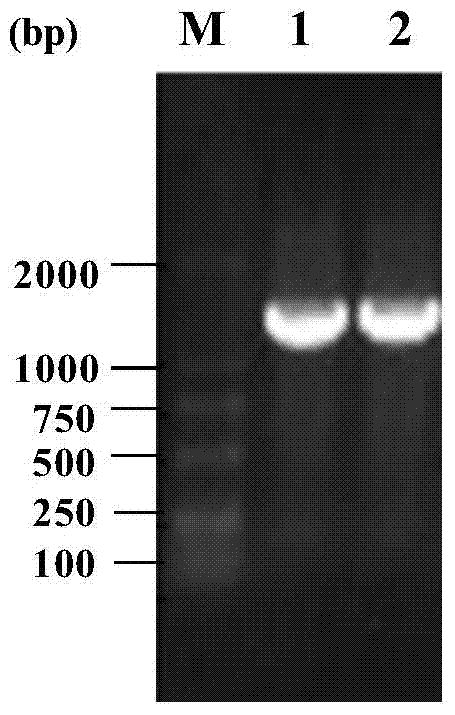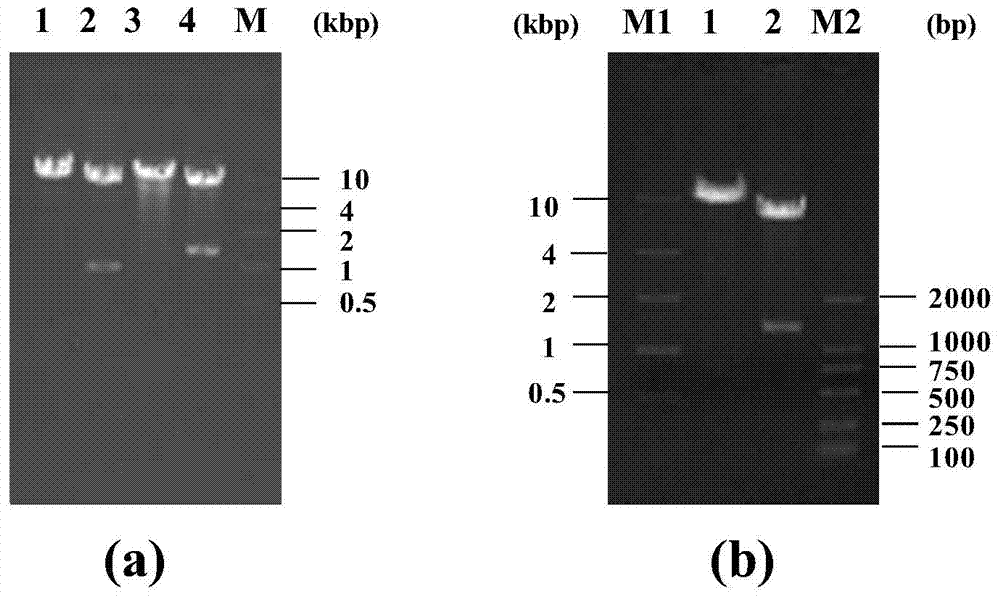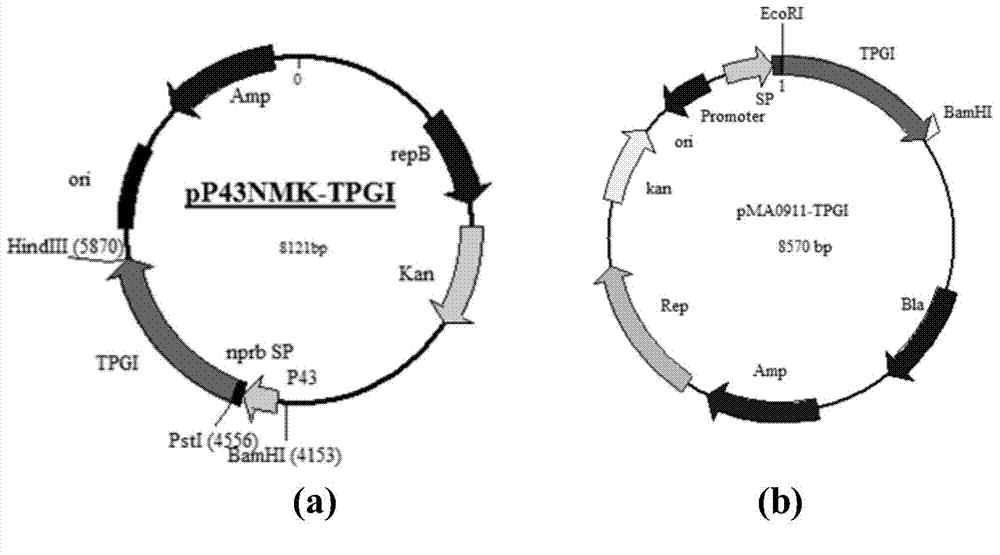Glucose isomerase genes, encoding enzymes, vectors and engineering bacteria and application
A technology of glucose isomerase and genetically engineered bacteria, applied in the field of genetic engineering, can solve the problems of weak acid resistance, difficult to meet the needs of HFCS-55 production, etc., and achieves the effects of high yield, convenient industrial application and simple process
- Summary
- Abstract
- Description
- Claims
- Application Information
AI Technical Summary
Problems solved by technology
Method used
Image
Examples
Embodiment 1
[0035] Example 1: Gene synthesis of glucose isomerase
[0036] The gene of glucose isomerase is derived from the whole genome sequence of Thermotoga petrophila RKU-1 (DSM NO.13995; JCM NO.10881), in which bases from 1149014bp to 1150348bp are the sequence encoding the glucose isomerase gene (GenBank No. YP_001244714, GI 148270254). In order to express the protein with the His-tag after the gene is connected to the vector pET-28b, its stop codon was excised, and the common restriction endonuclease recognition site BamH I was used in its sequence according to the codon degeneracy , Xho I, Pst I, Hind III and Nco I were sequence optimized, and the sequence of the newly designed glucose isomerase gene (tpgi) is shown in SEQ ID NO.1. The gene synthesis was entrusted to Shanghai Xuguan Biotechnology Development Co., Ltd. After completion, the gene was synthesized and connected to the cloning vector pES.
Embodiment 2
[0037] Example 2: Construction of glucose isomerase recombinant Bacillus subtilis
[0038] On the basis of Example 1, primers were designed respectively for different Bacillus subtilis expression vectors, using PCR technology, with the synthetic nucleotide sequence (shown in SEQ ID NO.1) as template, glucose isomerase gene ( tpgi) for amplification. For expression vector pP43NMK, design primer tpgi-NMK-F (5'-AAAA CTGCAG ATGATGGAATTTTTCCCTG-3') and tpgi-NMK-R (5'-CCC AAGCTT TTAACGAAGTTCAGCGATTG-3'), and introduce Pst I and Hind III restriction enzyme sites respectively; for expression vector pMA0911, design primer tpgi-MA-F (5'-CCG GAATTC ATGATGGAATTTTTCCCTG-3') and tpgi-MA-R (5'-CGC GGATCC TTAACGAAGTTCAGCGATTG-3'), and introduced EcoR I and BamH I restriction enzyme sites respectively.
[0039] The PCR reaction system (50 μL) was: 5 μL of 10×Pfu PCR buffer, 8 μL of dNTP Mixture; 1 μL of template DNA; 2 μL of upstream and downstream primers; 0.5 μL of Pfu DNA polymerase...
Embodiment 3
[0042] Example 3: Protein electrophoresis and enzyme activity assay of recombinant Bacillus subtilis
[0043] Recombinant bacteria B. subtilis WB800 / pP43NMK-tpgi and B. subtilis WB800 / pMA0911-tpgi after enzyme digestion verification and sequencing verification were inoculated into 50 mL LB liquid medium (containing kanamycin 40 μg / mL), 37 ° C, 150r / min shaking culture to OD 600 =0.8~1.0; the culture solution was inoculated into fresh 100mL LB liquid medium containing 40μg / mL kanamycin with 2% (v / v) inoculation amount, and cultured with shaking at 37°C and 150r / min for 10~24h.
[0044] Take the cell culture solution, centrifuge at 1000r / min for 5min, take the cell pellet and supernatant respectively, add 20μL SDS buffer solution to mix, heat in a boiling water bath for 5min, and perform SDS-PAGE analysis, and use the empty host without carrier as a control, As a result, no obvious glucose isomerase protein band was found; correspondingly, no enzyme activity of glucose isomeras...
PUM
 Login to View More
Login to View More Abstract
Description
Claims
Application Information
 Login to View More
Login to View More - R&D
- Intellectual Property
- Life Sciences
- Materials
- Tech Scout
- Unparalleled Data Quality
- Higher Quality Content
- 60% Fewer Hallucinations
Browse by: Latest US Patents, China's latest patents, Technical Efficacy Thesaurus, Application Domain, Technology Topic, Popular Technical Reports.
© 2025 PatSnap. All rights reserved.Legal|Privacy policy|Modern Slavery Act Transparency Statement|Sitemap|About US| Contact US: help@patsnap.com



